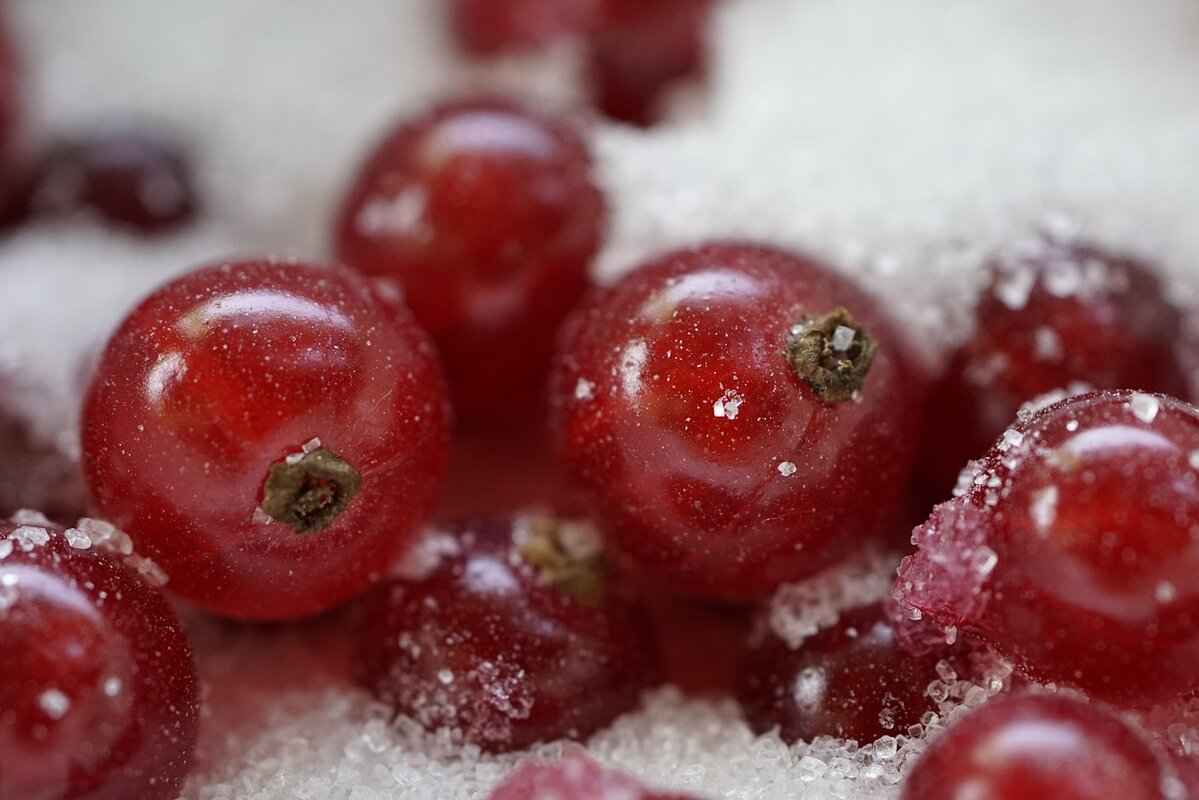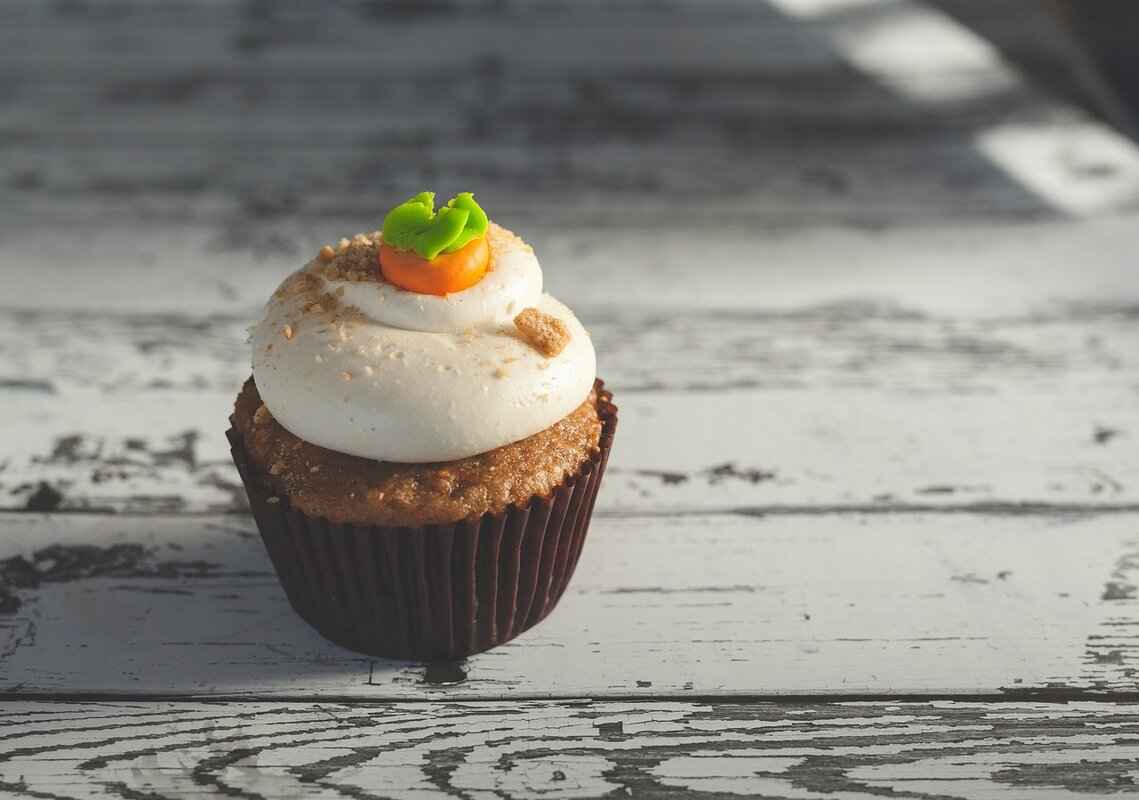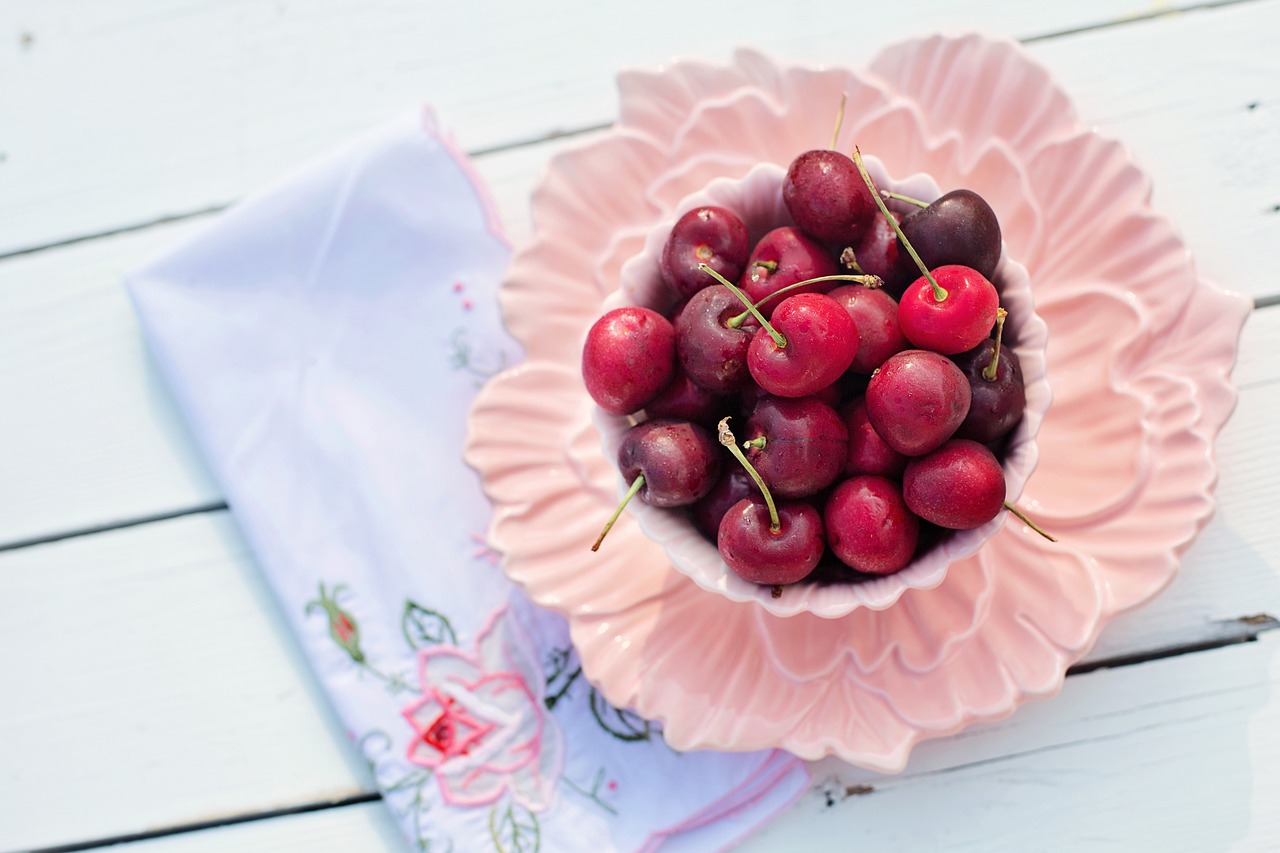Asian-inspired desserts and baked goods offer a vibrant tapestry of flavors and textures that captivate the senses. These delightful treats not only reflect the rich culinary traditions of various Asian cultures but also showcase innovative techniques that elevate them to new heights. From the chewy delight of mochi to the creamy indulgence of mango sticky rice, every bite is a journey into the heart of Asian gastronomy. In this article, we will explore popular Asian desserts, delve into the art of making traditional treats, and uncover how to incorporate these unique flavors into Western desserts.
Asian desserts are diverse, each offering a unique experience. Some of the most beloved include:
- Mochi: A chewy rice cake often filled with sweet red bean paste or ice cream.
- Mango Sticky Rice: A delightful combination of sweet coconut sticky rice topped with ripe mango slices.
- Egg Tarts: Flaky pastry filled with creamy egg custard, popular in Chinese bakeries.
These desserts not only satisfy the sweet tooth but also hold cultural significance, often enjoyed during festivals and celebrations.
Making mochi at home is a rewarding experience that allows for creativity. The essential ingredients include:
- Glutinous rice flour
- Water
- Sugar
Optional ingredients like matcha or fruit puree can enhance the flavor. Follow these steps for a perfect mochi:
1. Mix glutinous rice flour with water and sugar.2. Steam the mixture until sticky and pliable.3. Once cooled, mold into shapes and fill with your choice of filling.
Experimenting with fillings can take your mochi to the next level. Consider:
- Fresh fruit like strawberries or mango.
- Chocolate for a rich twist.
- Savory options like spicy tuna or sesame.
These variations will surprise your taste buds and make mochi-making a fun activity for gatherings.
Asian baked goods often blend traditional techniques with innovative flavors. Ingredients such as red bean, matcha, and coconut create distinct profiles that set them apart from Western desserts. Popular options include:
- Fluffy steamed buns: Light and airy, often filled with sweet or savory fillings.
- Mooncakes: Rich pastries traditionally enjoyed during the Mid-Autumn Festival.
Fusion desserts can be a delightful way to experiment with flavors. Consider these simple ideas:
- Add matcha powder to brownies for a unique twist.
- Incorporate yuzu zest into cheesecake for a refreshing flavor.
These adaptations can elevate classic recipes and impress your guests.
Exploring local bakeries and specialty shops can lead to discovering authentic Asian desserts. Look for:
- Bakeries specializing in Asian sweets: These often feature traditional recipes made with care.
- Food festivals: A great opportunity to sample a variety of treats and learn about their cultural significance.
Additionally, numerous online resources offer recipes and tutorials, making it easier to recreate these delightful treats at home.

What Are the Most Popular Asian Desserts?
Asian desserts are a delightful tapestry of flavors, textures, and cultural significance. They encompass a wide range of ingredients and techniques, resulting in treats that are not only sweet but also deeply rooted in tradition. Whether you’re a fan of chewy, sticky, or creamy textures, there’s an Asian dessert that will cater to your taste buds. In this exploration, we will delve into some of the most popular Asian desserts, highlighting their unique characteristics and the joy they bring to celebrations and everyday life.
Asian desserts vary widely, but some stand out for their unique flavors and textures. Here are a few of the most beloved treats:
- Mochi: This chewy rice cake is made from glutinous rice flour and is often filled with sweet red bean paste or ice cream. The texture is incredibly satisfying, making it a favorite among many.
- Mango Sticky Rice: A popular Thai dessert, this dish features sweet sticky rice paired with ripe mango and drizzled with coconut milk. The combination of flavors is both refreshing and indulgent.
- Egg Tarts: Originating from Hong Kong, these flaky pastries are filled with a creamy egg custard. They are often enjoyed warm and are a staple in dim sum restaurants.
- Red Bean Soup: A traditional dessert in various Asian cultures, this sweet soup is made from adzuki beans, sugar, and sometimes coconut milk. It can be served hot or cold, depending on the season.
- Sesame Balls: These deep-fried treats are made from glutinous rice flour and filled with sweet red bean paste. Coated in sesame seeds, they offer a delightful crunch on the outside and a soft, sweet filling.
Asian desserts often incorporate distinctive ingredients such as matcha, coconut, and tapioca, which contribute to their unique flavors and textures. The use of natural sweeteners like jaggery and honey instead of refined sugar also sets them apart. Additionally, many Asian desserts are designed to be shared, reflecting the communal culture of many Asian societies.
Many Asian desserts hold cultural significance and are often featured during festivals and celebrations. For example, mochi is traditionally made during the Japanese New Year, while mooncakes are essential during the Mid-Autumn Festival. These desserts symbolize prosperity, happiness, and togetherness, making them integral to cultural practices.
Some common ingredients found in Asian desserts include:
- Glutinous Rice Flour: Essential for making mochi and other chewy desserts.
- Coconut Milk: Adds creaminess and richness to many sweets, especially in Southeast Asian cuisines.
- Red Beans: Often used in soups and fillings, providing a sweet yet earthy flavor.
- Matcha: This powdered green tea is used to flavor cakes, cookies, and even ice creams.
- Tapioca Pearls: Commonly used in desserts like bubble tea and puddings, adding a chewy texture.
Asian desserts can be enjoyed in various ways. They are often served at the end of a meal, during special occasions, or as a sweet snack. Pairing them with tea or coffee can enhance the experience, allowing you to savor the flavors fully. Additionally, many Asian desserts are perfect for sharing, making them ideal for gatherings and celebrations.

How to Make Traditional Mochi?
Mochi, a delightful and chewy rice cake, holds a special place in many Asian cuisines, particularly in Japan, Korea, and China. This versatile treat is not only a staple during festive occasions but also serves as a canvas for a variety of flavors and fillings. Learning to make mochi at home not only allows for customization but also creates an engaging and fun experience for family and friends. Let’s dive into the essential steps and tips for making traditional mochi that will surely impress your loved ones.
To create authentic mochi, you will need the following essential ingredients:
- Glutinous rice flour (also known as mochiko) – This is the primary ingredient that gives mochi its unique chewy texture.
- Water – Used to hydrate the flour and create the dough.
- Sugar – Adds sweetness to the mochi; adjust according to your preference.
- Optional flavorings – Ingredients such as matcha powder, fruit purees, or cocoa powder can enhance the taste and color.
Making mochi at home can be a straightforward process if you follow these steps:
1. In a mixing bowl, combine glutinous rice flour, sugar, and water. Stir until smooth.2. Transfer the mixture to a heatproof dish and steam for about 20 minutes until it becomes sticky and translucent.3. Allow the mochi to cool slightly before dusting your hands with cornstarch to prevent sticking.4. Once cooled, knead the dough gently and divide it into small portions.5. Shape each piece into a round disc and add your desired filling, such as sweet red bean paste or ice cream.6. Seal the mochi by pinching the edges together and dust with more cornstarch to prevent sticking.
While traditional fillings like red bean paste are popular, you can explore a variety of creative options:
- Fresh fruit – Strawberries or mangoes add a refreshing twist.
- Chocolate – Melted chocolate or chocolate ganache can create a rich dessert.
- Savory options – Experiment with fillings like cheese or seasoned vegetables for a unique flavor.
To achieve the perfect mochi, avoid these common pitfalls:
- Overcooking – Steaming for too long can lead to a tough texture.
- Insufficient cornstarch – Not using enough cornstarch can cause the mochi to stick together.
- Incorrect ratios – Ensure you measure your ingredients accurately for the best results.
Proper storage is key to maintaining the texture and flavor of your homemade mochi:
- Store mochi in an airtight container at room temperature for up to two days.
- For longer storage, place mochi in the refrigerator, where it can last for about a week.
- To freeze, wrap each piece individually in plastic wrap and store in a freezer-safe bag. Thaw at room temperature before serving.
Creating traditional mochi at home is not only a rewarding culinary experience but also a chance to share a piece of Asian culture with others. With a few simple ingredients and some creativity, you can craft delicious mochi that will delight everyone!
Essential Ingredients for Making Mochi
When it comes to creating authentic mochi, understanding the essential ingredients is key to achieving the perfect texture and flavor. This traditional Japanese delicacy is not only a treat for the taste buds but also a delightful culinary experience. Below, we will delve into the essential ingredients needed for making mochi, as well as some optional ingredients that can elevate your homemade creations.
- Glutinous Rice Flour: This is the primary ingredient for mochi. It is also known as sweet rice flour or mochi flour. The high starch content gives mochi its characteristic chewy texture.
- Water: Essential for hydrating the flour and creating a dough-like consistency. The right amount of water is crucial to achieving the desired stickiness.
- Sugar: A small amount of sugar is often added to sweeten the mochi. Adjusting the sugar level can help balance the flavors, especially if you plan to fill the mochi with sweet ingredients.
In addition to these core ingredients, you can enhance your mochi with various optional components:
- Matcha: This finely ground green tea powder adds a beautiful color and a unique flavor profile. Incorporating matcha can create a delightful contrast to sweet fillings.
- Fruit Puree: Purees from fruits like strawberries or mangoes can be mixed into the dough for a refreshing twist. This not only adds flavor but also a vibrant hue.
- Food Coloring: If you want to create visually appealing mochi, a few drops of food coloring can be added to the dough, making it fun and festive.
To make the most of your mochi-making experience, it’s important to source high-quality ingredients. Look for glutinous rice flour in Asian grocery stores or online, as this will significantly impact the texture of your final product. Additionally, using fresh fruits for purees can enhance the overall taste and nutritional value of your mochi.
Once you have gathered your ingredients, the next step is to experiment with different flavors and fillings. Traditional fillings like sweet red bean paste or ice cream are popular choices, but don’t hesitate to get creative! Consider using chocolate, nuts, or even savory options like spicy tuna for a unique twist on this classic treat.
In summary, making mochi at home is a rewarding experience that allows for creativity and personalization. By understanding the essential ingredients and exploring optional additions, you can create delicious and visually stunning mochi that will impress your family and friends.
Step-by-Step Mochi Preparation
Making mochi is a delightful culinary experience that allows you to explore traditional Asian flavors while also getting creative in the kitchen. This chewy rice cake, made from glutinous rice flour, is not only a staple in many Asian cultures but also a canvas for a variety of fillings and flavors. In this guide, we will walk you through the step-by-step process of preparing mochi, ensuring that you achieve the perfect texture and taste.
- Glutinous Rice Flour: This is the main ingredient that gives mochi its characteristic chewiness.
- Water: Essential for mixing with the flour to create the dough.
- Sugar: Adds sweetness to the mochi; you can adjust the amount based on your preference.
- Optional Flavorings: Consider adding matcha powder, fruit purees, or even cocoa powder for unique variations.
Follow these detailed steps to create your own delicious mochi:
- Mix the Ingredients: In a large mixing bowl, combine glutinous rice flour and granulated sugar. Gradually add water while stirring until you achieve a smooth batter.
- Steam the Mixture: Transfer the batter into a heatproof dish and cover it with a cloth or plastic wrap. Place it in a steamer and steam for about 20-30 minutes, or until the mixture becomes sticky and translucent.
- Cool the Dough: Once steamed, remove the dish from the steamer and let it cool for a few minutes. Be careful, as it will be hot!
- Mold the Mochi: Dust your hands and a clean surface with cornstarch to prevent sticking. Take a portion of the cooled dough and flatten it into a disc shape. Place a small amount of your desired filling, such as sweet red bean paste or ice cream, in the center. Fold the edges over the filling and pinch them together to seal.
- Shape the Mochi: Roll the filled dough gently between your hands to form a smooth ball. Repeat this process until all the dough and filling are used up.
- Coat the Mochi: Dust the finished mochi with more cornstarch to prevent them from sticking together. You can also roll them in powdered sugar for added sweetness.
While traditional mochi often features sweet red bean paste, there are countless fillings you can experiment with to create your own unique flavors:
- Fresh Fruit: Use small pieces of strawberries, mangoes, or even kiwi for a refreshing twist.
- Chocolate Ganache: For chocolate lovers, a rich chocolate filling can elevate your mochi experience.
- Savory Options: Try incorporating savory fillings like sesame paste or spicy fillings for an adventurous take on mochi.
By following these steps and exploring different fillings, you can enjoy making and sharing homemade mochi with family and friends. Embrace the creativity that comes with this traditional dish, and don’t hesitate to experiment with flavors that excite your palate!
Creative Mochi Fillings to Try
Mochi is a delightful and versatile treat that originates from Japan, known for its chewy texture and ability to hold various fillings. While traditional fillings like sweet red bean paste are beloved, experimenting with different fillings can take your mochi experience to the next level. Here are some creative mochi fillings to try that will surprise your taste buds and elevate your dessert game.
- Fresh Fruit: Incorporating seasonal fruits like strawberries, mangoes, or even blueberries can add a refreshing burst of flavor. Simply slice the fruit and wrap it in mochi for a delightful contrast of textures.
- Chocolate Ganache: For chocolate lovers, filling mochi with rich chocolate ganache provides a decadent treat. Melt dark chocolate with cream, let it cool slightly, and then use it as a filling for a luxurious bite.
- Nut Butter: Almond or peanut butter can add a nutty richness to your mochi. You can even swirl in some honey or maple syrup for added sweetness.
- Coconut Cream: For a tropical twist, fill your mochi with coconut cream. This creamy filling pairs wonderfully with the chewy outer layer, creating a delightful contrast.
- Spicy Tuna or Salmon: For a savory option, try filling mochi with spicy tuna or salmon. This fusion of flavors combines the chewy texture of mochi with the rich taste of seafood.
- Cheese: Cream cheese or even a mild cheddar can make for a surprisingly delicious filling. Add herbs or spices to enhance the flavor profile.
- Vegetable Medley: For a healthier option, consider a filling made of sautéed vegetables like mushrooms, spinach, and garlic. This can create a delightful savory snack.
Preparing your fillings is crucial for achieving the best results. Here’s a simple guide:
1. Choose your filling (sweet or savory).2. Prepare the filling by mixing ingredients or cooking as needed.3. Allow the filling to cool if it’s cooked.4. Wrap the mochi around the filling carefully to ensure it’s sealed well.
- Texture Matters: Ensure your mochi is cooked to the right consistency. It should be chewy but not overly sticky.
- Experiment: Don’t hesitate to try unconventional combinations. The beauty of mochi lies in its versatility.
- Presentation: Consider dusting your mochi with cornstarch or powdered sugar to prevent sticking and enhance its visual appeal.
By exploring these creative mochi fillings, you can transform a traditional treat into a gourmet experience. Whether you prefer sweet or savory, the possibilities are endless. Enjoy the process of making mochi and share your delicious creations with friends and family!
Common Mistakes When Making Mochi
Mochi is a beloved treat in many Asian cultures, known for its chewy texture and versatility. However, making mochi at home can be challenging, especially for beginners. To ensure your homemade mochi turns out perfectly, it’s essential to be aware of some common mistakes that can lead to disappointing results.
- Overcooking the Mixture: One of the most frequent errors is overcooking the glutinous rice flour mixture. When cooked too long, the mochi can become tough and lose its desirable chewiness. It’s important to monitor the cooking time closely and remove the mixture from heat once it reaches a sticky, pliable consistency.
- Inadequate Use of Cornstarch: Another common pitfall is not using enough cornstarch to prevent sticking. Mochi can easily cling to surfaces, making it difficult to shape. Generously dusting your work surface and hands with cornstarch will help prevent this issue and ensure a smooth molding process.
- Wrong Flour Type: Using regular rice flour instead of glutinous rice flour can lead to a completely different texture. Glutinous rice flour is essential for achieving the characteristic chewiness of mochi. Always check the packaging to ensure you’re using the right type.
- Skipping the Cooling Step: After cooking, it’s crucial to let the mochi cool before shaping it. If you attempt to mold it while it’s still hot, it may not hold its shape and could become a sticky mess. Allow it to cool until it’s manageable to handle.
- Neglecting to Experiment: While traditional mochi is delightful, not experimenting with flavors and fillings can limit your creativity. Don’t hesitate to try different ingredients like matcha, fruit purees, or sweet fillings to enhance the flavor profile.
To achieve the perfect mochi, follow these tips:
- Monitor Cooking Time: Use a timer and check the texture frequently to avoid overcooking.
- Use Plenty of Cornstarch: Keep your workspace well-dusted with cornstarch to prevent sticking.
- Always Use Glutinous Rice Flour: Double-check your ingredients before starting to ensure you have the correct flour.
- Allow for Cooling: Be patient and let your mochi cool adequately before shaping.
- Be Creative: Encourage experimentation with flavors and fillings to make your mochi unique and enjoyable.
By being aware of these common mistakes and implementing the suggested solutions, you can create delicious, perfectly textured mochi that will impress your family and friends. Remember, practice makes perfect, and each attempt will bring you closer to mastering this delightful dessert.

What Makes Asian Baked Goods Unique?
Asian baked goods are a delightful fusion of tradition and innovation, often drawing from rich cultural histories while embracing modern culinary trends. These treats are not just desserts; they are a celebration of unique flavors, textures, and techniques that set them apart from their Western counterparts.
The uniqueness of Asian baked goods can be attributed to a combination of distinctive ingredients and preparation methods. Ingredients like red bean, matcha, and coconut are staples in many Asian desserts, offering a flavor profile that is often less sweet but more complex than traditional Western sweets.
- Red Bean Paste: Often used as a filling, red bean paste provides a sweet, earthy flavor.
- Matcha: This finely ground green tea powder adds a vibrant color and a subtle bitterness that balances sweetness.
- Coconut Milk: Used in various desserts, it lends a rich creaminess and a hint of tropical flavor.
- Glutinous Rice Flour: Essential for making chewy textures, this flour is key in many Asian desserts like mochi.
Asian baking techniques often involve steaming, which not only retains moisture but also creates a light and fluffy texture. For example, steamed buns are a popular choice, showcasing how the method enhances flavor and consistency. Additionally, layering techniques are commonly used in desserts like layered cakes or mooncakes, allowing for intricate designs and varied tastes in each bite.
There is a wide array of Asian baked goods that are worth exploring:
- Mooncakes: Traditionally eaten during the Mid-Autumn Festival, these pastries are filled with sweet or savory fillings and have a rich cultural significance.
- Mochi: A chewy rice cake that can be filled with various ingredients, from sweet red bean paste to ice cream.
- Castella Cake: A soft, sponge cake that originated from Japan, known for its light texture and subtle sweetness.
- Pineapple Buns: Despite the name, these buns do not contain pineapple; instead, they feature a sweet, crumbly topping that resembles the fruit.
While Western desserts often emphasize sweetness and richness, Asian baked goods tend to focus on balance and subtlety. For instance, desserts like mango sticky rice combine sweet, ripe mango with the creaminess of coconut milk, creating a harmonious blend of flavors.
If you’re looking to experiment with Asian flavors in your own baking, consider these tips:
- Add matcha powder to your cake batter for a unique twist.
- Use coconut milk in place of regular milk for a tropical flavor.
- Incorporate red bean paste into cookies or pastries for a sweet surprise.
By understanding the essence of Asian baked goods, you can appreciate their cultural significance and culinary artistry. Whether you’re indulging in a fluffy steamed bun or a delicate mooncake, each bite tells a story of tradition and creativity.
Essential Techniques in Asian Baking
When it comes to mastering the art of Asian baking, understanding the essential techniques is crucial. These methods not only contribute to the unique textures and flavors of the baked goods but also reflect the rich cultural heritage behind them. In this section, we will explore the fundamental techniques that define Asian baked goods, highlighting their significance in crafting authentic desserts.
- Steaming: This technique is prevalent in many Asian recipes, allowing for moist and fluffy textures. Steaming is often used for buns, dumplings, and cakes, preserving the ingredients’ natural flavors while ensuring a tender bite.
- Layering: Layering involves stacking ingredients or dough to create depth in flavor and texture. This technique is commonly seen in pastries such as mooncakes and layered cakes, where each layer adds a distinct taste.
- Specific Types of Flour: The choice of flour is critical in Asian baking. For instance, glutinous rice flour is essential for making mochi, while cake flour is often used for lighter, fluffier cakes. Understanding the properties of different flours can elevate your baking game.
Steaming is a traditional cooking method that has been adapted for baking in many Asian cultures. Unlike baking in an oven, steaming retains moisture, resulting in a softer and more delicate texture. This method is particularly effective for making bao buns and Chinese sponge cakes, which benefit from the gentle heat. The flavors of the ingredients are enhanced, creating a more vibrant taste experience.
Layering not only adds visual appeal to desserts but also introduces a complex flavor profile. For example, in layered mooncakes, each layer can be filled with different pastes, such as red bean or lotus seed, offering a delightful surprise with each bite. This technique showcases the skill of the baker and the cultural significance of the dessert.
In Asian baking, the choice of flour is paramount. Glutinous rice flour is a staple for chewy textures, while all-purpose flour is versatile for various baked goods. Almond flour and cake flour are also popular for their ability to create light and airy desserts. Understanding the role of each type of flour can help bakers achieve the desired texture and flavor in their creations.
To master these techniques, practice is key. Start with simple recipes and gradually incorporate more complex methods. Pay attention to the temperature and timing when steaming or baking, as these factors can significantly impact the final product. Additionally, experimenting with different flours and fillings can lead to exciting new flavors and textures.
In conclusion, mastering the essential techniques in Asian baking requires a blend of tradition and innovation. By understanding the importance of steaming, layering, and the choice of flour, bakers can create authentic and delicious Asian baked goods that celebrate the rich culinary heritage of the region.
Popular Asian Baked Goods to Try
When it comes to Asian baked goods, the diversity is as rich as the cultures they originate from. From the delicate flavors of Japanese pastries to the robust and hearty Chinese buns, these treats offer a delightful exploration of taste and tradition. Each region has its own specialties, making it a culinary journey worth embarking on for any dessert lover.
Asian baked goods are characterized by their unique ingredients and preparation methods. Here are some popular options you should consider trying:
- Mooncakes: Traditionally eaten during the Mid-Autumn Festival, these round pastries have a rich filling, often made from red bean or lotus seed paste, and are topped with salted egg yolks.
- Steamed Buns (Bao): These fluffy buns can be filled with a variety of ingredients, from savory meats to sweet pastes, and are a staple in many Asian cuisines.
- Egg Tarts: A beloved dessert in many Asian countries, these tarts feature a flaky crust filled with a smooth, creamy egg custard.
- Mochi: This chewy rice cake can be enjoyed plain or filled with sweet red bean paste or ice cream, making it a versatile treat.
- Japanese Cheesecake: Known for its light and fluffy texture, this cheesecake is less sweet than its Western counterpart and often features a hint of citrus.
The uniqueness of Asian baked goods lies in their ingredients and techniques. Many of these treats utilize ingredients such as matcha, red bean, and coconut, which are not commonly found in Western desserts. Additionally, the use of steaming as a cooking method contributes to the moist and tender textures of many Asian pastries.
Making Asian baked goods at home can be a rewarding experience. Here’s a brief overview of how to prepare some traditional favorites:
- Mooncakes: Begin by preparing the dough and filling separately. After resting, shape the dough around the filling, and use a mold to create the signature patterns before baking.
- Steamed Buns: Combine flour, sugar, and yeast to create a dough. Allow it to rise, then shape it around your choice of filling and steam until fluffy.
For those looking to experiment, consider adding fusion flavors to traditional recipes. For example, try incorporating matcha into your cheesecake or using coconut milk in your steamed buns for a tropical twist. These innovative approaches not only enhance the flavor but also offer a modern take on classic desserts.
If you’re not ready to bake at home, finding authentic Asian baked goods can be an adventure in itself. Look for local bakeries that specialize in Asian desserts or attend food festivals celebrating these culinary delights. Many cities also have Asian grocery stores that feature fresh baked goods from various regions.
In conclusion, exploring the world of Asian baked goods opens the door to a myriad of flavors, textures, and traditions. Whether you choose to try them at a local bakery or make them at home, these delightful treats are sure to satisfy your sweet tooth and enrich your culinary experiences.

How to Incorporate Asian Flavors into Western Desserts?
Incorporating Asian flavors into Western desserts not only adds a unique twist but also creates a delightful fusion that excites the palate. By using ingredients like matcha, yuzu, and sesame, traditional recipes can be transformed into extraordinary culinary experiences. This article explores various ways to blend these flavors seamlessly into your favorite Western desserts.
The combination of Asian ingredients with Western techniques offers a fresh perspective on dessert-making. Asian flavors often emphasize balance, utilizing sweet, salty, and umami notes to create depth. This complexity can elevate the simplicity of Western desserts, making them more intriguing and satisfying.
- Matcha: This finely ground green tea powder adds a vibrant color and rich flavor to desserts.
- Yuzu: A citrus fruit that provides a unique tartness, perfect for enhancing cakes and creams.
- Sesame: Both sesame seeds and sesame oil can introduce a nutty flavor that complements sweet dishes.
- Red Bean Paste: A sweet filling that can be used in cookies, cakes, and pastries for an authentic touch.
Matcha can be easily incorporated into various desserts. For instance, adding matcha powder to brownies not only gives them a beautiful green hue but also infuses them with a subtle earthy flavor. Alternatively, you can create matcha-infused ice cream or cheesecake for a refreshing twist on classic recipes.
Yuzu’s bright and zesty flavor can elevate many Western desserts. Use yuzu juice in curds, ganaches, or even as a glaze for cakes. A yuzu cheesecake can offer a delightful balance between creamy and tangy, impressing your guests with its unique flavor profile.
Sesame seeds can add a delightful crunch and nutty flavor to various desserts. Incorporate toasted sesame seeds into cookies or use sesame oil in cake batters to enhance the flavor. A sesame-infused panna cotta can be a surprising yet delicious dessert option.
Consider these simple yet effective fusion dessert ideas:
- Matcha Tiramisu: Replace coffee with matcha for a Japanese twist on this classic Italian dessert.
- Yuzu Mousse: A light and airy dessert that combines the creaminess of mousse with yuzu’s citrusy brightness.
- Red Bean Brownies: Incorporate red bean paste into brownie batter for a unique flavor and texture.
Experiment with pairing Asian ingredients with traditional Western recipes. For instance, using coconut milk in a panna cotta can add a tropical flair, while incorporating matcha into shortbread cookies offers a delightful contrast to the buttery flavor.
Many online resources provide a wealth of recipes and ideas for incorporating Asian flavors into Western desserts. Websites, food blogs, and social media platforms can serve as excellent sources of inspiration. Additionally, local bakeries that specialize in fusion desserts can offer unique insights and tasting experiences.
By embracing the rich and diverse flavors of Asian cuisine, you can create exciting fusion desserts that not only taste incredible but also celebrate the beauty of culinary diversity.
Simple Fusion Dessert Ideas
Exploring the world of desserts can be an exciting journey, especially when it comes to blending traditional flavors with modern techniques. can transform ordinary recipes into extraordinary treats, impressing your guests and tantalizing their taste buds. Here are some innovative ways to incorporate Asian flavors into your favorite desserts.
Adding matcha powder to your brownie batter not only enhances the flavor but also infuses a beautiful green hue. The rich, earthy notes of matcha complement the sweetness of chocolate, creating a delightful balance. Here’s how to make them:
- Substitute 1/4 cup of cocoa powder with 2 tablespoons of matcha powder.
- Mix the matcha powder with the dry ingredients to ensure even distribution.
- Top with a dusting of powdered sugar for an elegant finish.
Yuzu zest can elevate your traditional cheesecake to new heights. This Japanese citrus fruit adds a refreshing tang that cuts through the richness of the cream cheese. To incorporate yuzu into your cheesecake:
- Add 2 tablespoons of yuzu juice and 1 teaspoon of zest to the cream cheese mixture.
- Consider a yuzu glaze on top for an extra burst of flavor.
- Garnish with fresh berries for a colorful presentation.
Using coconut milk instead of heavy cream in panna cotta gives this classic Italian dessert an Asian-inspired twist. The creamy texture combined with the subtle sweetness of coconut creates a delightful treat. Here’s a simple recipe:
Ingredients:- 1 can coconut milk- 1/4 cup sugar- 1 tablespoon gelatin- 1 teaspoon vanilla extractInstructions:1. Heat coconut milk and sugar until dissolved.2. Sprinkle gelatin over the mixture and stir until fully dissolved.3. Pour into molds and refrigerate until set.
Incorporating red bean paste into cookies can create a delightful surprise for your guests. The sweet and slightly earthy flavor of red beans pairs wonderfully with buttery cookie dough. To make red bean paste cookies:
- Mix 1/2 cup of red bean paste into your cookie dough.
- For an added twist, include white chocolate chips for a sweet contrast.
Sesame seeds bring a nutty flavor that can transform homemade ice cream into a unique dessert. For a simple sesame ice cream:
Ingredients:- 2 cups heavy cream- 1 cup milk- 1/2 cup sugar- 1/4 cup tahini (sesame paste)Instructions:1. Whisk together all ingredients until smooth.2. Pour into an ice cream maker and churn according to the manufacturer's instructions.3. Freeze until solid and serve with a sprinkle of toasted sesame seeds.
By experimenting with these fusion dessert ideas, you can create delightful treats that celebrate the best of both worlds. The incorporation of Asian flavors not only enhances the taste but also adds a unique flair to your dessert repertoire. So, gather your ingredients and let your creativity flow in the kitchen!
Pairing Asian Ingredients with Classic Recipes
is a culinary adventure that invites creativity and innovation in the kitchen. By infusing traditional Western desserts with distinctive Asian flavors, you can create unique and memorable dishes that surprise and delight the palate. This fusion not only enhances the taste but also adds a cultural narrative to each recipe.
One popular method of incorporating Asian ingredients is through the use of coconut milk. This rich and creamy alternative to dairy can transform classic desserts like panna cotta into something extraordinary. The subtle sweetness and tropical notes of coconut milk provide a refreshing twist, making it an ideal base for various flavors. For instance, consider infusing your panna cotta with lime zest or mango puree to create a vibrant and refreshing dessert that embodies the essence of Asian cuisine.
Another exciting fusion idea is to incorporate red bean paste into traditional cookies. This sweet and earthy paste, made from adzuki beans, adds depth and a unique texture to baked goods. Imagine a classic chocolate chip cookie, but with a swirl of red bean paste mixed in; the result is a delightful blend of flavors that pays homage to both cultures. You can also create mochi-inspired cookies by adding chewy bits of mochi into your cookie dough for a fun and chewy texture.
Furthermore, matcha, a finely ground green tea powder, is another ingredient that elevates Western desserts. Adding matcha to your cake batter or frosting not only imparts a beautiful green hue but also introduces a rich umami flavor that balances sweetness. Try making matcha cupcakes topped with a light cream cheese frosting for a visually stunning and delicious treat.
In addition to these ingredients, sesame is a versatile flavor that can be incorporated into various desserts. From sesame cookies to a drizzle of sesame caramel over ice cream, the nutty flavor complements many traditional sweets. For a unique take, consider making sesame brittle to use as a topping for your favorite desserts, adding a delightful crunch and a hint of earthiness.
Another interesting fusion is using yuzu, a citrus fruit popular in Japanese cuisine, to enhance traditional Western desserts. Yuzu’s tart and fragrant profile can be used in cheesecakes, tarts, or even as a glaze for pastries. The zesty flavor brightens the dessert and intrigues the palate, making it a fantastic option for those looking to explore new taste sensations.
When experimenting with these combinations, it’s essential to maintain a balance between the flavors. The goal is to create harmony rather than allowing one ingredient to overpower the other. Start with small amounts of Asian ingredients, taste as you go, and adjust to achieve the desired flavor profile.
In conclusion, pairing Asian ingredients with classic recipes opens up a world of culinary possibilities. Whether you’re making coconut panna cotta, red bean cookies, or matcha cupcakes, these creative fusions can elevate your dessert game and provide a unique dining experience. Explore these flavors and techniques, and let your creativity shine in the kitchen!

Where to Find Authentic Asian Desserts?
Finding authentic Asian desserts can be a delightful adventure that immerses you in the rich tapestry of Asian culture. With a vast array of flavors, textures, and techniques, these desserts not only satisfy your sweet tooth but also tell a story of tradition and innovation. Whether you are a seasoned foodie or a curious novice, exploring local bakeries, specialty shops, and food festivals can lead to remarkable discoveries.
Local bakeries often serve as the heart of a community, showcasing traditional recipes passed down through generations. These establishments frequently offer a variety of desserts that reflect the unique heritage of their cuisine. For example:
- Mochi – A chewy rice cake that comes in various flavors and fillings.
- Mooncakes – A traditional pastry filled with sweet or savory fillings, especially popular during the Mid-Autumn Festival.
- Egg Tarts – A flaky pastry filled with creamy custard, loved in many Asian cultures.
Specialty shops often focus on specific aspects of Asian desserts, offering ingredients and products that may not be available in regular grocery stores. Here are some tips for your visit:
- Look for shops that carry imported ingredients, such as matcha, red bean paste, or coconut milk.
- Check for seasonal offerings that celebrate cultural festivals, as these often include unique dessert items.
- Ask the staff for recommendations on popular items or customer favorites.
Food festivals are a fantastic way to explore a variety of authentic Asian desserts in one place. These events often feature:
- Sampling opportunities to taste different desserts from various regions.
- Cooking demonstrations that showcase traditional techniques and recipes.
- Meet-and-greet sessions with local chefs and bakers who can share insights into their craft.
When searching for authentic Asian desserts, consider the following:
- Research online reviews and ratings to find the best establishments in your area.
- Engage with local food communities on social media to get recommendations and tips.
- Be open to trying new things; sometimes the most memorable experiences come from taking a chance on something unfamiliar.
If you can’t visit a bakery or festival, numerous online platforms provide recipes and tutorials for making your own Asian desserts at home. Websites, blogs, and YouTube channels dedicated to Asian cuisine can offer valuable insights into:
- Traditional recipes that you can recreate.
- Modern twists on classic desserts that reflect contemporary tastes.
- Step-by-step guides that make the process accessible for beginners.
In conclusion, the journey to find authentic Asian desserts is not just about satisfying your cravings; it’s a cultural exploration that enriches your understanding of diverse culinary traditions. Whether you are visiting a local bakery, a specialty shop, or a vibrant food festival, the experience is bound to be rewarding and delicious.
Best Bakeries for Asian Desserts
Exploring the world of Asian desserts can be an exhilarating experience, especially when you venture into local bakeries that specialize in these delightful treats. Each bakery often holds its own unique charm and a treasure trove of traditional recipes, crafted with meticulous care and authenticity. In this guide, we will delve into the best places to find these hidden gems, the cultural significance of the desserts they offer, and how visiting these bakeries can enhance your culinary journey.
Local bakeries are not just places to buy sweets; they are cultural hubs that reflect the heritage and traditions of their communities. By visiting these establishments, you can:
- Discover Authentic Recipes: Many bakeries pride themselves on using traditional methods passed down through generations, ensuring that every bite is a taste of history.
- Support Local Businesses: By choosing to shop locally, you contribute to the sustainability of your community and help preserve culinary traditions.
- Experience Unique Flavors: Asian desserts often incorporate flavors like matcha, red bean, and coconut that are less common in Western sweets, providing a refreshing change.
When searching for the best bakeries, consider the following factors:
- Quality of Ingredients: Look for bakeries that emphasize using fresh, high-quality ingredients. This often translates into better-tasting desserts.
- Variety of Offerings: A good bakery will offer a range of desserts, from mochi and pandan cakes to steamed buns and mooncakes.
- Customer Reviews: Online reviews can provide insight into the quality and authenticity of the bakery’s offerings.
Here are some renowned bakeries known for their exceptional Asian desserts:
| Bakery Name | Location | Specialties |
|---|---|---|
| Sweet Rice | San Francisco, CA | Mochi Ice Cream, Dango |
| Golden Gate Bakery | San Francisco, CA | Egg Tarts, Mooncakes |
| Little Bao | New York, NY | Steamed Buns, Matcha Cheesecake |
| Bakery N | Los Angeles, CA | Mango Sticky Rice, Coconut Cake |
Finding the best bakeries often requires a bit of exploration:
- Ask Locals: Engaging with local food enthusiasts can lead you to lesser-known but exceptional bakeries.
- Social Media: Platforms like Instagram and Yelp can provide real-time feedback and recommendations.
- Food Festivals: Attend local food festivals where many bakeries showcase their specialties, allowing you to sample a variety of desserts in one place.
In conclusion, visiting local bakeries that specialize in Asian desserts is a rewarding experience that allows you to discover hidden gems and traditional recipes crafted with authenticity. By exploring these bakeries, you can indulge in unique flavors and support the preservation of cultural culinary practices.
Online Resources for Recipes and Inspiration
In today’s digital age, finding resources for Asian desserts has never been easier. Numerous online platforms provide a wealth of information, from authentic recipes to cultural insights, allowing enthusiasts to recreate these delightful treats right in their own kitchens. Whether you’re a novice baker or an experienced chef, the internet is filled with inspiration that can elevate your dessert-making skills.
When diving into the world of Asian desserts, it’s essential to know where to look. Here are some popular online resources:
- Food Blogs: Many food bloggers specialize in Asian cuisine, offering detailed recipes and personal anecdotes that enrich the cooking experience.
- YouTube Channels: Visual learners can benefit from cooking tutorials on platforms like YouTube, where chefs demonstrate techniques step-by-step.
- Social Media Platforms: Instagram and Pinterest are great for discovering trendy dessert ideas and visually appealing presentations.
The variety of Asian desserts available online is astounding. Here are some categories to explore:
- Traditional Desserts: Recipes for classics like mochi, mango sticky rice, and red bean buns are widely available.
- Fusion Desserts: Innovative recipes that blend Asian flavors with Western techniques, such as matcha cheesecake or sesame brownies.
- Seasonal Treats: Many websites offer recipes for desserts tied to specific holidays or festivals, showcasing unique ingredients and methods.
To make the most of online tutorials, consider the following tips:
- Follow Along: As you watch a cooking video, have the ingredients ready and follow along in real-time.
- Take Notes: Jot down important steps or tips shared by the chef to ensure you remember them for your own baking.
- Engage with the Community: Many platforms have comment sections or forums where you can ask questions and share your results with others.
Understanding the cultural significance of the desserts you are making can add depth to your baking experience. Many online resources provide background stories and historical context for each dessert. For example:
- Mochi: This traditional Japanese rice cake is often enjoyed during the New Year and symbolizes good fortune.
- Mooncakes: These are traditionally eaten during the Mid-Autumn Festival and represent family unity.
Here are some highly recommended websites where you can find authentic recipes and cultural insights:
- Serious Eats: Offers a variety of Asian dessert recipes along with cooking techniques and tips.
- Just One Cookbook: A fantastic resource for Japanese recipes, including many traditional desserts.
- Asian Inspirations: This site focuses on a wide range of Asian cuisines, featuring both recipes and cultural stories.
By exploring these online resources, you can embark on a delightful journey through the world of Asian desserts. Not only will you learn to recreate these treats, but you will also gain a deeper appreciation for the cultures behind them.
Frequently Asked Questions
- What is mochi and how is it made?
Mochi is a chewy rice cake that originates from Japan and is made from glutinous rice flour. To make it, you mix the flour with water and sugar, steam it until sticky, then mold it into shapes. It can be filled with sweet or savory fillings, making it a versatile treat!
- What are some unique Asian baked goods I should try?
You should definitely try fluffy steamed buns, flaky mooncakes, and delightful egg tarts. Each of these treats showcases a unique blend of flavors and textures that are sure to surprise your palate!
- How can I incorporate Asian flavors into my desserts?
Incorporating Asian flavors is easier than you think! Try adding matcha to brownies or using coconut milk in your panna cotta. These small tweaks can transform ordinary desserts into extraordinary creations!
- Where can I find authentic Asian desserts?
To find authentic Asian desserts, explore local bakeries that specialize in Asian sweets, check out specialty shops, or visit food festivals. These places often have hidden gems that are made with love and tradition!
- What are some common mistakes to avoid when making mochi?
Common pitfalls include overcooking the mixture or not using enough cornstarch to prevent sticking. These mistakes can lead to a less-than-perfect texture, so be careful to follow the steps closely!














